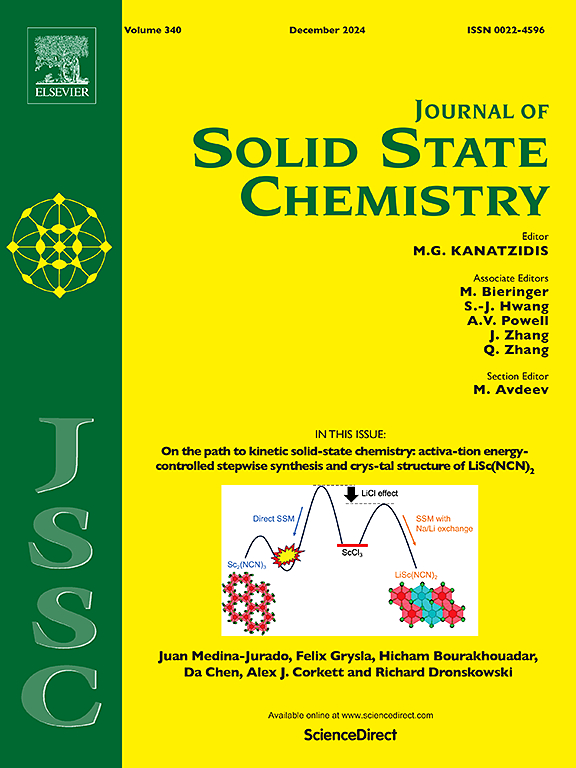Enhancement capture capability of cadmium ions using a MOF-in-MOF composite
IF 3.2
3区 化学
Q2 CHEMISTRY, INORGANIC & NUCLEAR
引用次数: 0
Abstract
Due to the limited Cd(II) absorption capacity and stability of single and simple metal-organic frameworks (MOFs), combining two MOF building blocks to create a core-shell MOF-in-MOF composite material offers a promising approach for efficiently capturing Cd(II) from aqueous solutions. Utilizing the epitaxial growth method, we successfully fabricated a core-shell structured (NH2-MIL-125)-in-(ZIF-67) (M-in-Z) composite material. The material underwent comprehensive characterization employing SEM, XRD, FT-IR, N2 adsorption-desorption, and diverse testing methods to evaluate its Cd(II) adsorption and removal capabilities in water environments. The Cd(II) adsorption capacities exhibited the sequence NH2-MIL-125 < ZIF-67 < M-in-Z(54). Adsorption isotherm results adhered to the Langmuir model, indicating a relatively ideal single-molecule layer adsorption process for Cd(II) on M-in-Z(54). The adsorption kinetics conformed to the pseudo-second-order model, indicating that equilibrium was reached in 30 min. Thermodynamic studies unveiled the spontaneous, exothermic nature of the M-in-Z(54) adsorption process, associated with an increase in degrees of freedom. Physical adsorption emerged as the primary driving force, complemented by chemical adsorption. Following five adsorption cycles, M-in-Z(54) sustained its Cd(II) adsorption performance at 92.56 % of the initial capacity, showcasing outstanding regeneration capability. Moreover, the structure and morphology of M-in-Z(54) remained intact after regeneration, demonstrating superior stability compared to the core-satellite structure. This conclusion highlights the promising potential of M-in-Z(54) as an environmentally friendly material for efficient Cd(II) removal.

求助全文
约1分钟内获得全文
求助全文
来源期刊

Journal of Solid State Chemistry
化学-无机化学与核化学
CiteScore
6.00
自引率
9.10%
发文量
848
审稿时长
25 days
期刊介绍:
Covering major developments in the field of solid state chemistry and related areas such as ceramics and amorphous materials, the Journal of Solid State Chemistry features studies of chemical, structural, thermodynamic, electronic, magnetic, and optical properties and processes in solids.
 求助内容:
求助内容: 应助结果提醒方式:
应助结果提醒方式:


